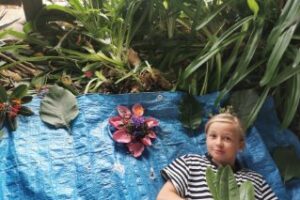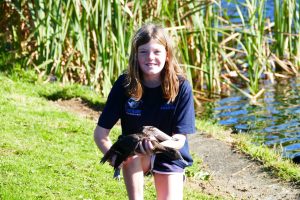On Saturday 11 February 2023, North Taranaki KCC met at the Mangaoraka carpark with the intention of walking to the Waiongana Stream to investigate if it was a “healthy stream’.
Before we headed off to the stream, we discussed why we monitor fresh water streams and why we picked the stream we did. We thought this stream should be healthy because it was in the National Park and shouldn’t have stuff flowing into it that would hurt it.
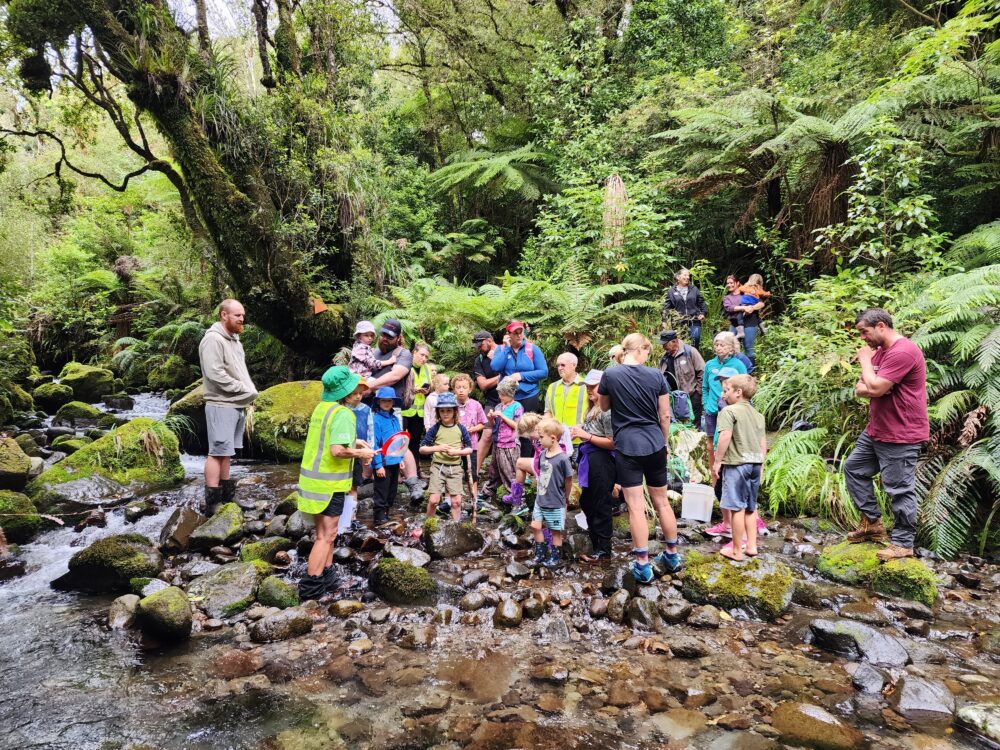
After a short walk through the bush to the stream we stood at the edge and considered the steam habitat. We looked at the stream bed, banks and the use of the land. We talked about why the habitat is important for providing a place to live, shelter from high flows, protection from predators and a place for living things to lay their eggs.
We looked for large trees (providing shade and homes for birds and insects), overhanging vegetation (more shade, filter for the stream), root mats (places to hide) and large things in the stream like rocks, stones, wood & roots (good homes for stream bugs). We learnt that sand and mud clog the gills of fish and that’s bad!
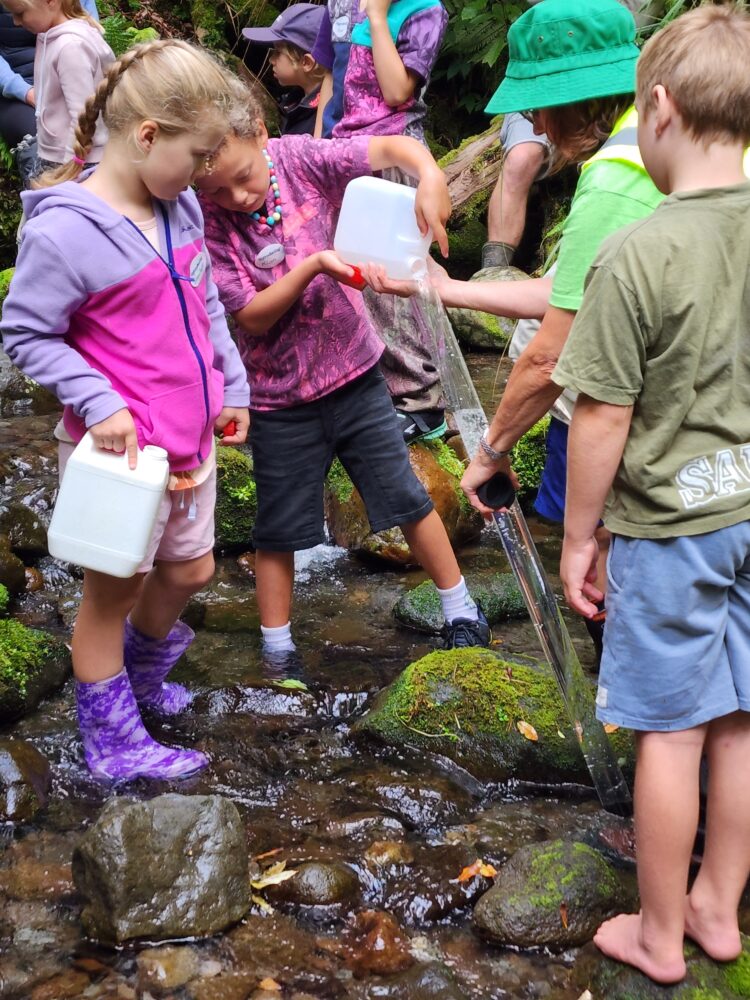
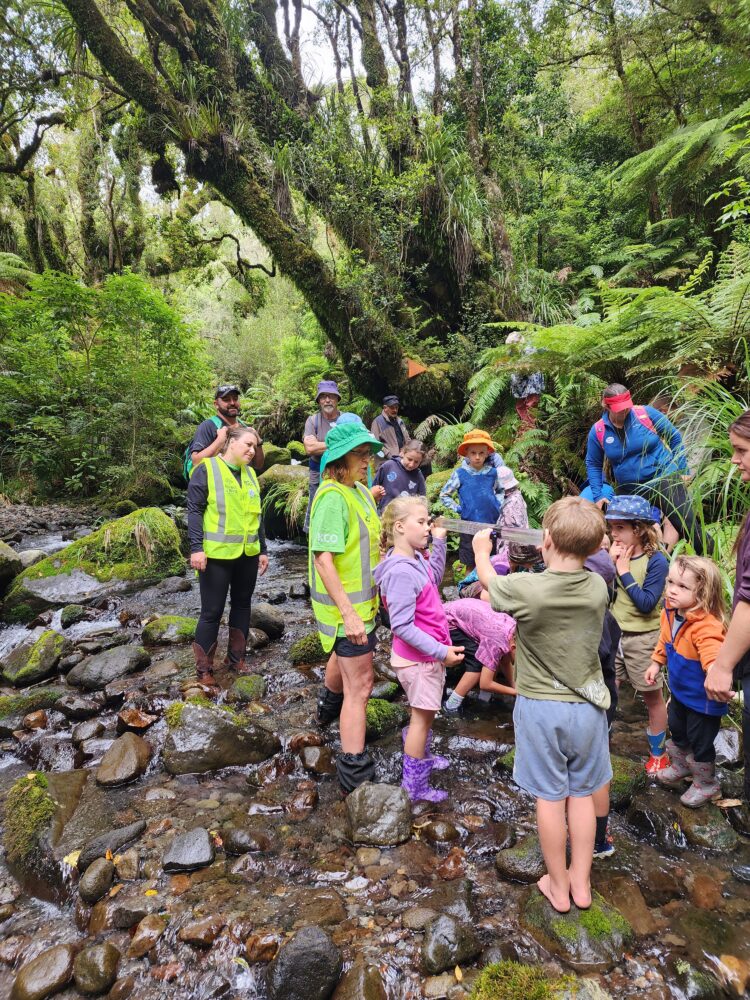
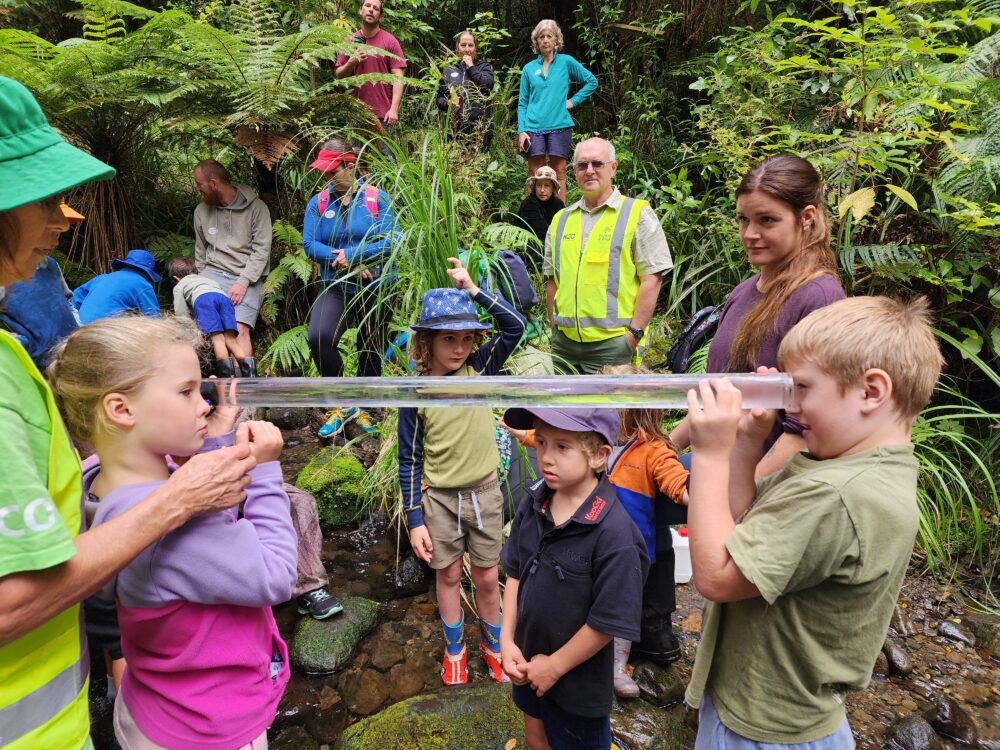
Using a SHMAK (Stream Health Monitoring & Assessment Kit) we tested the clarity of the water using a signi tube. This was fun and all the KCC’ers wanted a turn! The tube was filled with water, a magnet fixed to the end we looked through and then moved down the tube until it could no longer be seen. We could see the magnet right to the end of the tube! Result: Beautifully clear water.
The temperature of the stream is important. It must be below 22°C for stream animals. Warm water holds less oxygen. Result: 10.7°C – great for our stream bugs.
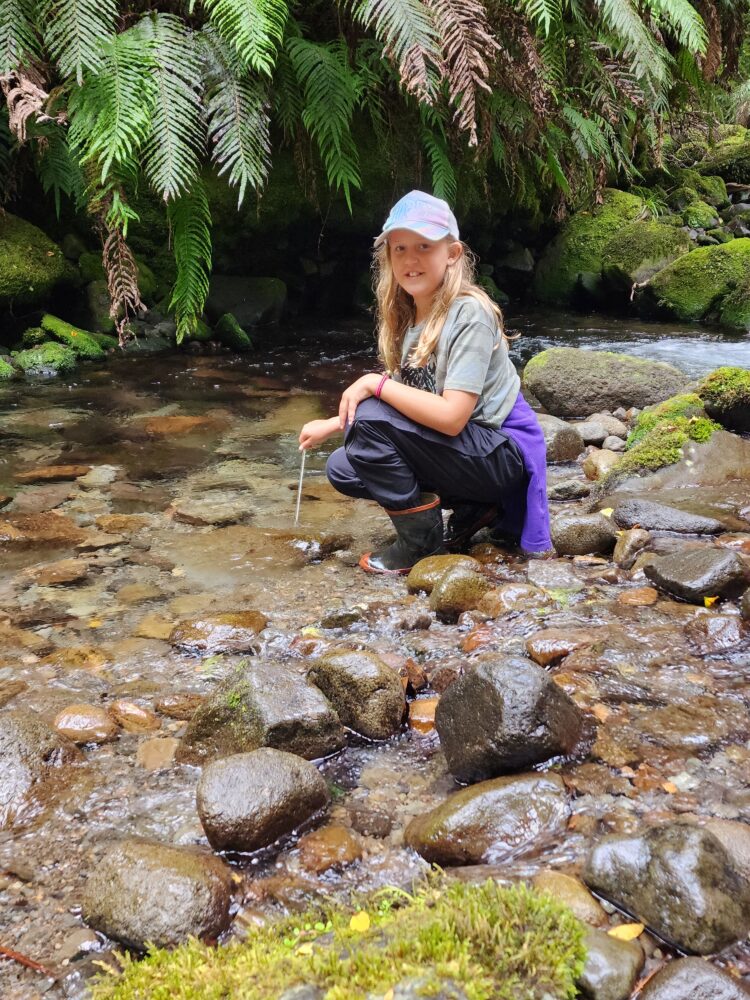
Fast currents help plants get nutrients and animals get oxygen better. We looked at the flow of our stream which was flowing well where we were.
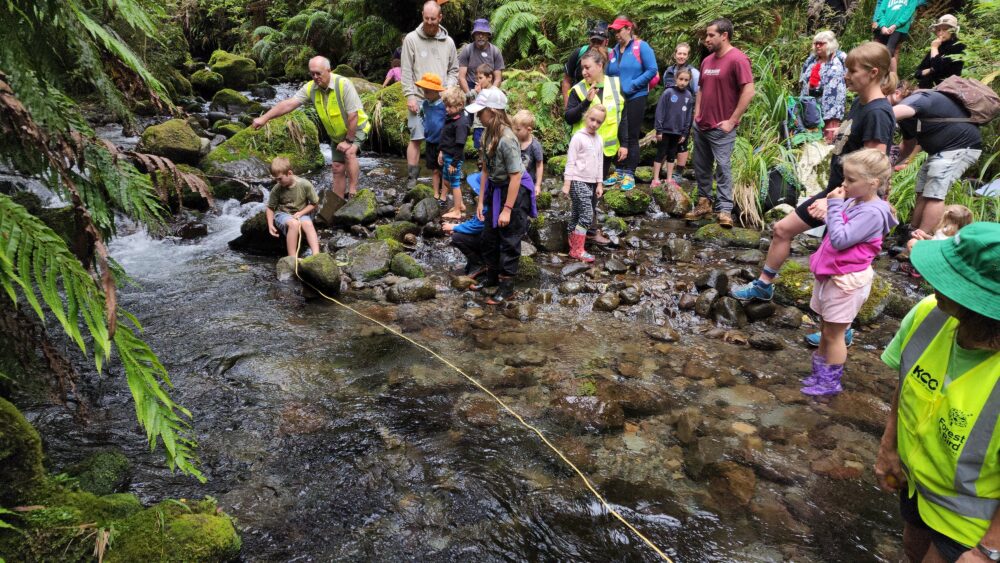
Benthic Macroinvertebrates (stream bugs) live at the bottom of streams and lakes, they have no backbone. They are often the very young stage of insects like flies, mayflies, caddisflies, damselflies and beetles. They are an important part of the food web because they eat things and other things eat them.
We picked up stones and turned them over, catching what was on them in our nets and then placing in our ID containers so we could look at them more closely. Our searching was very rewarding. We found lots of evidence that the habitat, water clarity, temperature and flow were all providing for the needs of the stream bugs.


